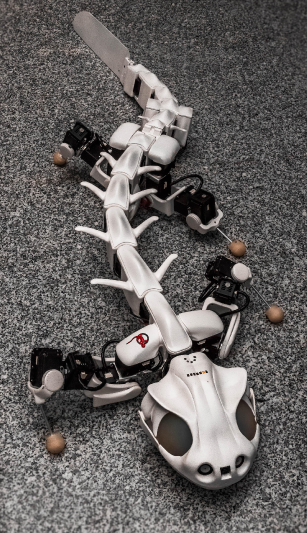Scientists are turning to nature’s engineering marvels — specifically the lightning-fast tongues of chameleons and salamanders — to inspire new innovations in robotics and actuator technology. The research aims to replicate the incredible speed and efficiency of these animal movements to create more agile, energy-efficient machines.
Nature’s Design: The Physics Behind Lightning-Fast Tongues
Researchers studying the biomechanics of chameleons and salamanders have discovered that their tongues can accelerate up to 50 times faster than the blink of an eye. This remarkable feat is made possible by specialized muscle and elastic tissue structures that store and release energy like a high-tension spring. The result is an explosive burst of motion that allows these creatures to capture prey with unmatched precision.
Biomimicry in Robotics and Actuation
By mimicking these natural mechanisms, engineers are designing next-generation actuators — the components responsible for movement in robots and machinery — that outperform traditional systems. Unlike conventional motors, which rely on rotational energy, these bio-inspired actuators utilize stored elastic energy to produce rapid linear motion. This innovation promises to revolutionize areas such as soft robotics, prosthetics, and precision manufacturing.
Early Prototypes Show Promising Results
Research teams at several universities and laboratories are developing prototypes capable of replicating this high-speed movement on both micro and macro scales. These early models demonstrate that elastic-driven systems can perform quick grasping, jumping, or gripping actions while consuming minimal energy — a major step toward creating more efficient and responsive robotic systems.
Potential Applications Across Industries
The implications of this research stretch far beyond robotics. Experts believe these advancements could enhance medical devices, micro-surgical tools, and space exploration robots, where compact, lightweight, and fast-reacting mechanisms are essential. For instance, future prosthetic limbs may one day benefit from chameleon-inspired speed and accuracy, while planetary rovers could use similar technology for agile terrain navigation.
The Rise of Biomimicry in Engineering
This project is part of a broader movement in biomimicry — the practice of designing technologies inspired by nature’s most efficient systems. As scientists continue decoding the physics behind animal motion, the ultra-fast tongues of chameleons and salamanders could soon power a new era of robotic agility and precision, bridging the gap between biology and technology.

